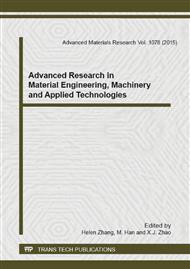p.106
p.110
p.114
p.118
p.122
p.129
p.134
p.139
p.144
Application of Biological Materials on Countermeasures and Development in Exercise-Induced Meniscus Injury
Abstract:
The development of biological materials provides a new method for the treatment of meniscus injury of the knee joint, and has broad application prospects. Meniscus of knee joint peripheral region blood supply, with self-repair function, non blood supply area is not self-repair function, when the damage appears select biomaterial implanted prosthetic treatment, according to the source is divided into natural scaffolds and artificial synthetic polymer scaffold materials, application compatibility, elastic, according to the toughness, strength and other properties of biological materials and human body, select the appropriate biological materials to replace therapy.
Info:
Periodical:
Pages:
122-125
Citation:
Online since:
December 2014
Authors:
Price:
Сopyright:
© 2015 Trans Tech Publications Ltd. All Rights Reserved
Share:
Citation:


